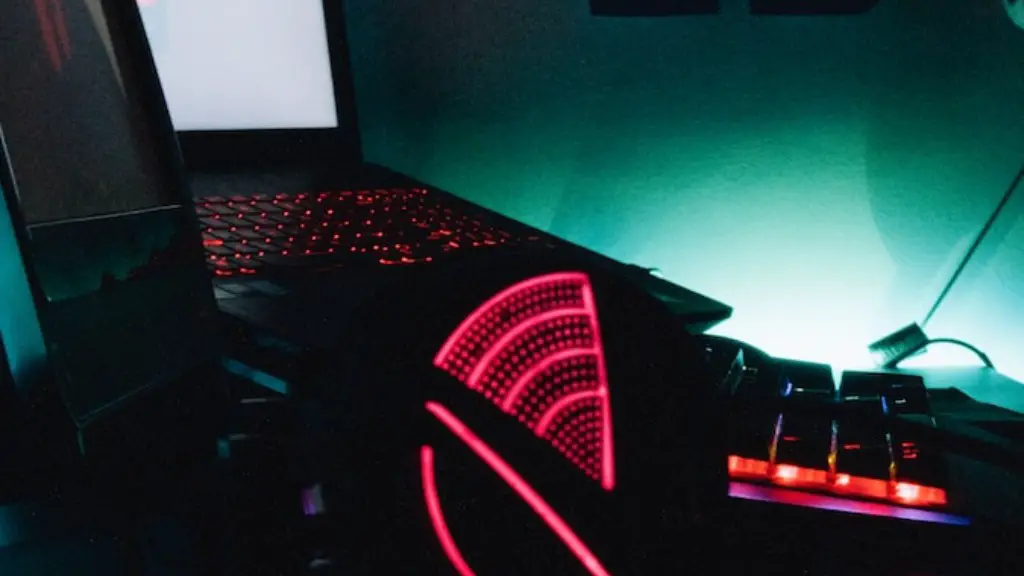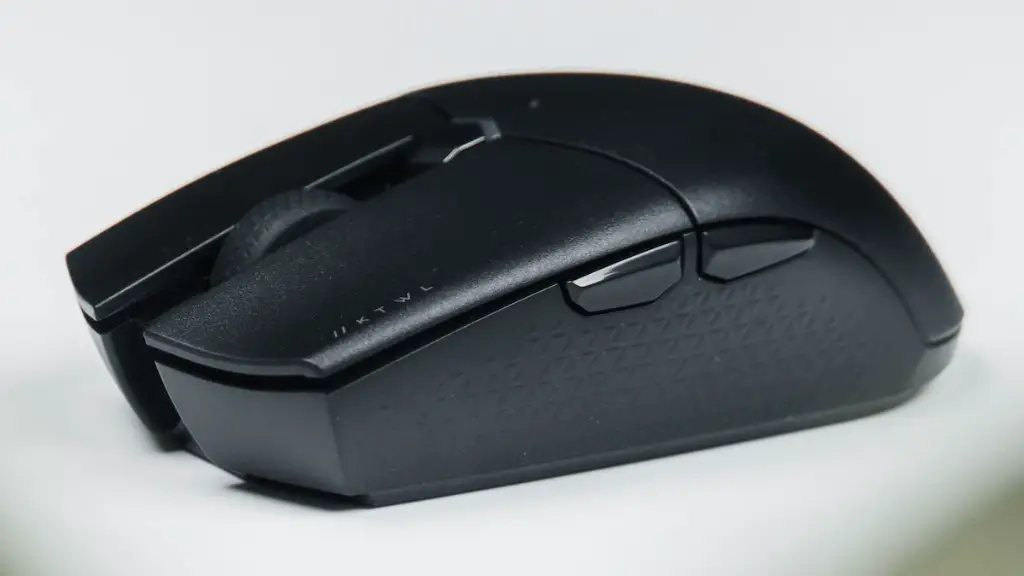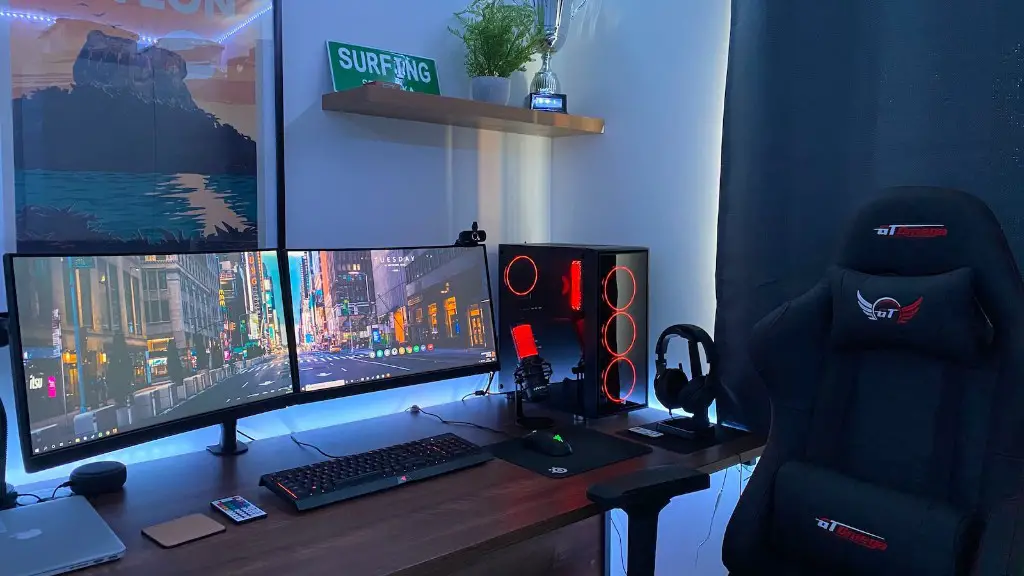Finding the right gaming monitor is not an easy task. It requires balancing the available resources with your gaming needs and budget. You will want to prioritize quality, resolution, refresh rate, size, and GPU support. Here’s a look at the must-have features to consider when buying a gaming monitor.
Resolution is the most important factor you must consider. A higher resolution means you can view more details and play more smoothly. Most gaming monitors offer resolutions up to 2560 x 1440, but 4K solutions are becoming increasingly common. It’s important to match your monitor resolution to the capabilities of your GPU.
Refresh rate is another key factor. A higher refresh rate means the display can render more frames per second, resulting in smoother gameplay and a more immersive experience. Many gaming monitors have a maximum refresh rate of 144Hz, but some offer more. A 240Hz refresh rate is ideal for competitive gamers, as it can give you the edge over your opponents.
Size is also important. Larger sizes offer a more immersive gaming experience, but they may not be cost-effective or practical, depending on your budget and space constraints. Generally, 24- to 27-inch monitors are suitable for most gamers, though you may want to opt for a larger display if you have the means.
You will also want to make sure your monitor is compatible with your GPU. Most monitors support the latest GPUs, but it’s important to double-check before making a purchase. Some GPUs may require special adaptors, so make sure you do your research.
Finally, keep in mind that a good gaming monitor should have low input lag, adjustable settings, good viewing angles, and excellent color accuracy. Input lag is especially important for a great gaming experience, so it’s worth checking out reviews to get an idea of how the monitor performs in this respect.
Display Technology
One of the primary factors to consider when looking for a gaming monitor is the display technology. The most common options are Twisted Nematic (TN), Vertical Alignment (VA), and In-Plane Switching (IPS) panels. TN panels offer the fastest response times, but they’re also prone to certain issues such as color shifting and narrow viewing angles.
VA panels offer better color accuracy and contrast ratios than TN while sacrificing some speed. On the other hand, IPS panels are the most color accurate and offer the widest viewing angles, but they tend to be the most expensive. Take your budget and performance requirements into consideration when deciding which panel technology is right for you.
Remember, no matter which technology you choose, the display should offer good color accuracy and consistency. This will ensure that your game looks as good as it can on your screen.
In addition, consider the panel’s static contrast ratio. This represents the ratio between the brightest whites and the darkest blacks the screen is capable of producing. Higher ratios mean better contrast ratios, which result in more detailed images.
Also consider the monitor’s refresh rate, which is the number of times the image on the screen updates in one second. Higher refresh rates result in smoother gaming experiences, so look for monitors that offer refresh rates of 144Hz and higher.
Adaptive Sync
Adaptive Sync technology is also crucial for achieving a smooth gaming experience. It synchronizes the refresh rate of the monitor with the frame rate of the GPU in order to reduce stuttering, screen tearing and input lag. AMD FreeSync and Nvidia G-Sync are the two most popular adaptive sync options.
These technologies enable the monitor and the GPU to communicate, allowing them to adjust their refresh and frame rates accordingly. This ensures smooth framerates and allows for better visuals and performance. Make sure your monitor is compatible with your GPU before making a purchase.
Another important factor to consider when shopping for gaming monitors is the panel’s response time. This measures how long it takes for a pixel to transition from one color to another. Lower response times result in clearer, smoother visuals and faster reaction times.
Finally, the backlight is another factor to take into consideration. Many gaming monitors use LED backlight technology, which offers bright, consistent color reproduction. Some monitors also use advanced backlight scanning, which allows for smoother gaming performance, as it produces less input lag.
Connectivity Options
The right gaming monitor should also offer plenty of connectivity options. Look for monitors with HDMI, DisplayPort, and USB ports, as these will provide you with plenty of versatility. DVI, VGA, and audio ports may also be useful for some connection types.
Make sure you have enough ports for all of your peripherals and consider the additional features available. If a monitor has additional USB ports, for example, you can use those to connect peripherals like gaming controllers and gaming headsets.
Most gaming monitors will also come with built-in speakers, but you may want to invest in a dedicated gaming headset or sound system for maximum immersion. The monitor should also come with an integrated stand or wall mount so that you can adjust the display to the right position and height.
Contrast Ratio & Color Gamut
The contrast ratio is another important factor to consider when choosing a gaming monitor. This represents the ratio between the brightest colors and the darkest colors that the monitor can produce. Higher contrast ratios will result in deeper blacks and more detailed visuals.
The color gamut, meanwhile, is the range of colors the monitor can display. Look for monitors with wide-gamut panels for the best results. Wide-gamut displays are especially important for HDR gaming, as they can take advantage of brighter, more vibrant colors.
Other features to look for include adjustable lighting, a headphone jack, and an integrated webcam. An adjustable backlight can be useful for finding the perfect balance between contrast and brightness, while a headphone jack will let you plug in your gaming headset or other audio peripherals. An integrated webcam can be useful for streaming or video calls.
Viewing Angles & Brightness
Viewing angles are important when it comes to gaming monitors. Monitors with narrow viewing angles may look blurry or washed-out when viewed from the side, while monitors with wide viewing angles will remain clear and crisp. IPS panels are the best choice for wide viewing angles.
Brightness is another factor to consider. You’ll want a monitor that offers good brightness levels and one that can be adjusted according to your preferences. Some monitors also offer a range of brightness presets for different game types.
Don’t forget about contrast ratio and gamma either. Higher contrast ratios can make colors appear more vibrant and make dark areas of the screen appear blacker. Gamma, on the other hand, is the range of brightness between completely black and completely white. Higher gamma values produce better color accuracy.
When considering a gaming monitor, be sure to pay attention to all of these features in order to get the best performance possible. High refresh rates, low input lag, wide viewing angles, good contrast ratios, and excellent color accuracy are all important factors to consider when selecting the right monitor for your needs.



